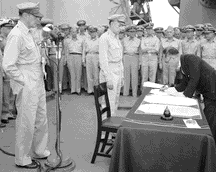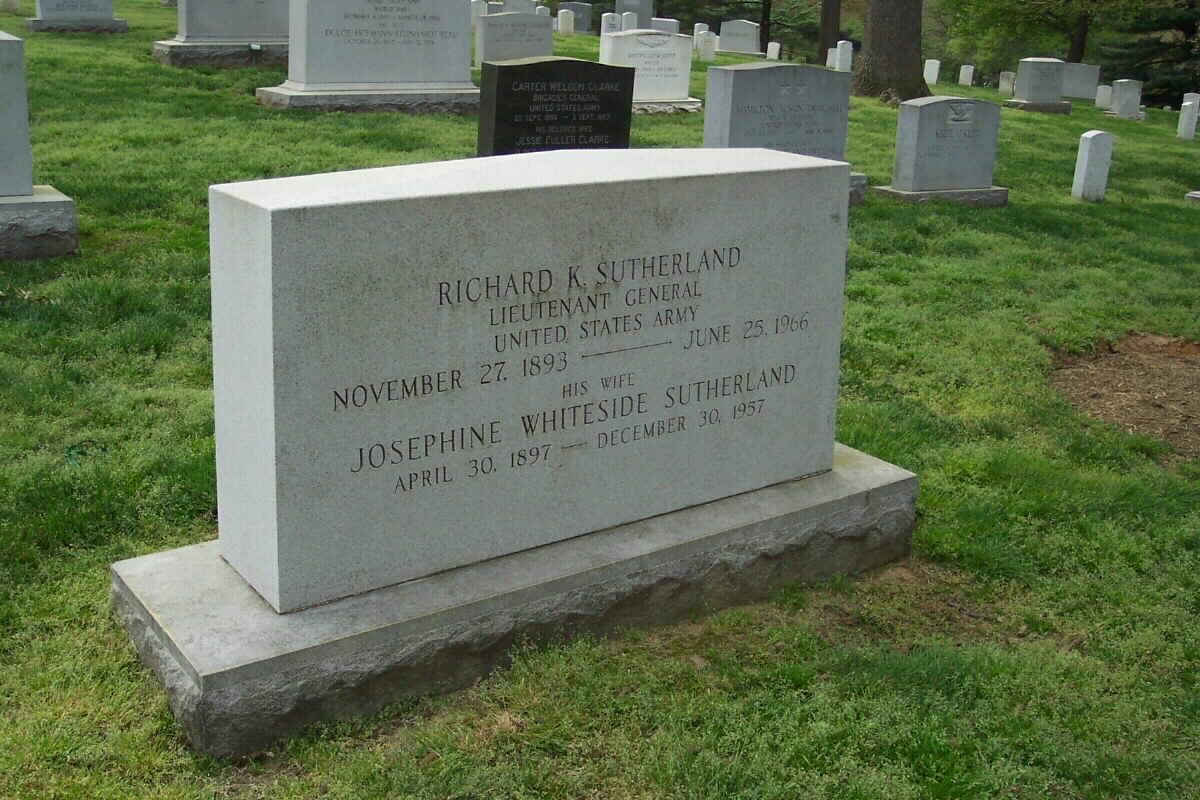From a contemporary press report: June 25, 1966
Lieutenant General Richard K. Sutherland, the Chief of Staff to General Douglas MacArthur throughout World War II in the Pacific, died today (Saturday June 25, 1966) at Walter Reed Medical Center. He was 73 years old and had retired from the Army in 1946.
At MacArthur’s Side
As Chief of Staff to General of the Army Douglas MacArthur, General Sutherland was at his side when he was evacuated from Corregidor just before the fall of Bataan in 1942 and when he waded ashore on the Lingayen coast in January 1945, and led the forces that drove the Japanese from the Philippines.
At Allied headquarters in Australia, General Sutherland’s office was the clearinghouse for General MacArthur’s decisions and ideas. Regarded as his chief’s alter ego and the kingpin of MacArthur generalship, he was rated as one of the ablest officers in the Army. To him and other staff officers — but most often to him — General MacArthur left the details of his decisions.
Between Generals Sutherland and MacArthur, as between the commander and all of the men he worked with daily, there was a bond of comradeship established under the grim conditions of their struggle against the Japanese when they had to make do with what little was available.
The Japanese surrender on the battleship Missouri in Tokyo Bay on September 2, 1945, was under General Sutherland’s aegis. When Colonel L. Moore Cosgrave of Canada signed the Japanese Peace Document underneath instead on the line for Canada the Japanese noticed the error and called attention to it.
Son of U.S. Senator
Considerable discussion between Japanese and Americans followed. Then General Sutherland leaned over the table and laboriously ran two strokes of his pen through the names of the four countries above the misplaced signatures and wrote them in where they belonged. The Japanese then gravely accepted the corrected document.
Richard Kerens Sutherland was born in Hancock, Maryland on November 27, 1893, the son of former United States Senator Howard Sutherland of West Virginia, and Mrs. Etfie Harris Sutherland. He graduated from Yale with a B.A. in 1916 and then served on the Mexican Border as a private in the Connecticut National Guard, which had been federalized.
The future general soon accepted a National Guard commission as a second lieutenant of field artillery and later transferred to the Regular Army with a commission in the infantry. He was promoted to captain in 1917.
In the Philippines
After serving in France, Captain Sutherland returned to the United States and in 1932 and 1933 he attended the Army War College in Washington and then served with the Operations and Training Division of the War Department General Staff. In 1937 he went to Tientsin, China, in command of a battalion of the 15th Infantry. In March 1938, he was promoted to major and was transferred to Manila as adviser to the Philippine Army. He was promoted to lieutenant colonel in July of that year and to colonel, brigadier general and major general in 1941.
When General MacArthur organized the United States Army of the Far East in August 1941, he named General Sutherland his Chief of Staff.
In the post General Sutherland organized the staff of the command and supervised the mobilization of the Philippine Army and its assimilation into the United States forces.
MacArthur Boom
Hostilities began before completion of the program of mobilization and reinforcement. The command met the major enemy landing in force on December 21, 1941, and delayed its advance to permit occupation of a prepared defensive position on Corregidor Island, denying the entrance to Manila Bay to enemy forces. Generals MacArthur and Sutherland were among the officers ordered to escape from Corregidor when the fall of Bataan was imminent.
In 1943 General Sutherland, with Lieutenant General George C. Kennedy, Fifth Air Force Commander, took part in an effort to promote General MacArthur’s candidacy for the Presidency.
The late Senator Arthur H. Vandenberg, Republican of Michigan, tried to get the War Department to rescind the order that prevented General MacArthur from seeking or accepting political office. The general wrote him and thanked him in a way that led Senator Vandenberg to work with a group of Republicans to bring about General MacArthur’s nomination.
The boom collapsed, however, when correspondence in which the general joined in criticism of the Roosevelt Administration was published. In the face of the embarrassment, General MacArthur issued a statement saying, “I do not covet” the Republican nomination “nor would I accept it.”
General Sutherland was highly honored for his services, receiving the Distinguished Service Medal with Oak Leaf Cluster, the Silver Star and the highest honors of the Philippine Government.
Surviving are his widow, the former Mrs. Virginia Shaw Root, whom he married in 1962 after the death of his first wife; a daughter, Mrs. Robert B. Carney, Jr., of Washington; and two sisters, Mrs. Louis Allen of Chevy Chase, Maryland, and Mrs. William Dunckel (Mrs. Wallis Bleecker Dunckel) of New York.
Funeral services will be held at the chapel in Fort Meyer, Virginia on Wednesday (June 29, 1966), followed by burial in Arlington National Cemetery.
His gravestone in Section 30 of Arlington National Cemetery reads:
RICHARD K. SUTHERLAND
Lieutenant General
United States Army
November 27, 1895 – June 25, 1966
His Wife
JOSEPHINE WHITESIDE SUTHERLAND
April 30, 1897 – December 30, 1957
SUTHERLAND, JOSEPHINE W W/O RICHARD KERENS
DATE OF BIRTH: 04/30/1897
DATE OF DEATH: 12/30/1957
DATE OF INTERMENT: 01/02/1958
BURIED AT: SECTION 30 SITE 694-1
ARLINGTON NATIONAL CEMETERY
WIFE OF RK SUTHERLAND – LT GEN USA
SUTHERLAND, RICHARD KERENS
LG USA
VETERAN SERVICE DATES: Unknown
DATE OF BIRTH: 11/27/1893
DATE OF DEATH: 06/25/1966
DATE OF INTERMENT: 06/29/1966
BURIED AT: SECTION 30 SITE 694-2
ARLINGTON NATIONAL CEMETERY
General Douglas MacArthur (l) and Lieutenant General Richard K. Sutherland (r) shown accepting the Japanese surrender aboard the USS Missouri in Tokyo Bay on September 2, 1945.
Michael Robert Patterson was born in Arlington and is the son of a former officer of the US Army. So it was no wonder that sooner or later his interests drew him to American history and especially to American military history. Many of his articles can be found on renowned portals like the New York Times, Washingtonpost or Wikipedia.
Reviewed by: Michael Howard


